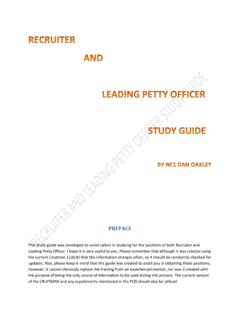Transcription of The Intelligent Investor
1 THE. Intelligent . Investor . A BOOK OF PRACTICAL COUNSEL. REVISED EDITION. B E NJAM I N G RAHAM. Updated with New Commentary by Jason Zweig An e-book excerpt from To Through chances various, through all vicissitudes, we make our way.. Aeneid Contents Epigraph iii preface to the Fourth Edition, by Warren E. Buffett viii A Note About Benjamin Graham, by Jason Zweig x Introduction: What This Book Expects to Accomplish 1. COMMENTARY ON THE INTRODUCTION 12. 1. Investment versus Speculation: Results to Be Expected by the Intelligent Investor 18. COMMENTARY ON CHAPTER 1 35. 2. The Investor and Inflation 47. COMMENTARY ON CHAPTER 2 58. 3. A Century of Stock-Market History: The Level of Stock Prices in Early 1972 65. COMMENTARY ON CHAPTER 3 80. 4. General Portfolio Policy: The Defensive Investor 88.
2 COMMENTARY ON CHAPTER 4 101. 5. The Defensive Investor and Common Stocks 112. COMMENTARY ON CHAPTER 5 124. 6. Portfolio Policy for the Enterprising Investor : Negative Approach 133. COMMENTARY ON CHAPTER 6 145. 7. Portfolio Policy for the Enterprising Investor : The Positive Side 155. COMMENTARY ON CHAPTER 7 179. 8. The Investor and Market Fluctuations 188. iv v Contents COMMENTARY ON CHAPTER 8 213. 9. Investing in Investment Funds 226. COMMENTARY ON CHAPTER 9 242. 10. The Investor and His Advisers 257. COMMENTARY ON CHAPTER 10 272. 11. Security Analysis for the Lay Investor : General Approach 280. COMMENTARY ON CHAPTER 11 302. 12. Things to Consider About Per-Share Earnings 310. COMMENTARY ON CHAPTER 12 322. 13. A Comparison of Four Listed Companies 330. COMMENTARY ON CHAPTER 13 339. 14.
3 Stock Selection for the Defensive Investor 347. COMMENTARY ON CHAPTER 14 367. 15. Stock Selection for the Enterprising Investor 376. COMMENTARY ON CHAPTER 15 396. 16. Convertible Issues and Warrants 403. COMMENTARY ON CHAPTER 16 418. 17. Four Extremely Instructive Case Histories 422. COMMENTARY ON CHAPTER 17 438. 18. A Comparison of Eight Pairs of Companies 446. COMMENTARY ON CHAPTER 18 473. 19. Shareholders and Managements: Dividend Policy 487. COMMENTARY ON CHAPTER 19 497. 20. Margin of Safety as the Central Concept of Investment 512. COMMENTARY ON CHAPTER 20 525. Postscript 532. COMMENTARY ON POSTSCRIPT 535. Appendixes 1. The Superinvestors of Graham-and-Doddsville 537. Contents vi 2. Important Rules Concerning Taxability of Investment Income and Security Transactions (in 1972) 561.
4 3. The Basics of Investment Taxation (Updated as of 2003) 562. 4. The New Speculation in Common Stocks 563. 5. A Case History: Aetna Maintenance Co. 575. 6. Tax Accounting for NVF's Acquisition of Sharon Steel Shares 576. 7. Technological Companies as Investments 578. Endnotes 579. Acknowledgments from Jason Zweig 589. Index 591. About the Authors Credits Front Cover Copyright About the Publisher The text reproduced here is the Fourth Revised Edition, updated by Graham in 1971 1972 and initially published in 1973. Please be advised that the text of Graham's original footnotes (designated in his chapters with superscript numerals) can be found in the Endnotes sec- tion beginning on p. 579. The new footnotes that Jason Zweig has intro- duced appear at the bottom of Graham's pages (and, in the typeface used here, as occasional additions to Graham's endnotes).
5 preface to the Fourth Edition, by Warren E. Buffett I read the first edition of this book early in 1950, when I was nine- teen. I thought then that it was by far the best book about investing ever written. I still think it is. To invest successfully over a lifetime does not require a strato- spheric IQ, unusual business insights, or inside information. What's needed is a sound intellectual framework for making deci- sions and the ability to keep emotions from corroding that frame- work. This book precisely and clearly prescribes the proper framework. You must supply the emotional discipline. If you follow the behavioral and business principles that Gra- ham advocates and if you pay special attention to the invaluable advice in Chapters 8 and 20 you will not get a poor result from your investments.
6 (That represents more of an accomplishment than you might think.) Whether you achieve outstanding results will depend on the effort and intellect you apply to your invest- ments, as well as on the amplitudes of stock-market folly that pre- vail during your investing career. The sillier the market's behavior, the greater the opportunity for the business-like Investor . Follow Graham and you will profit from folly rather than participate in it. To me, Ben Graham was far more than an author or a teacher. More than any other man except my father, he influenced my life. Shortly after Ben's death in 1976, I wrote the following short remembrance about him in the Financial Analysts Journal. As you read the book, I believe you'll perceive some of the qualities I men- tioned in this tribute. viii ix preface to the Fourth Edition BENJAMIN GRAHAM.
7 1894 1976. Several years ago Ben Graham, then almost eighty, expressed to a friend the thought that he hoped every day to do something foolish, something creative and something generous.. The inclusion of that first whimsical goal reflected his knack for pack- aging ideas in a form that avoided any overtones of sermonizing or self-importance. Although his ideas were powerful, their delivery was unfailingly gentle. Readers of this magazine need no elaboration of his achievements as measured by the standard of creativity. It is rare that the founder of a disci- pline does not find his work eclipsed in rather short order by successors. But over forty years after publication of the book that brought structure and logic to a disorderly and confused activity, it is difficult to think of pos- sible candidates for even the runner-up position in the field of security analysis.
8 In an area where much looks foolish within weeks or months after publication, Ben's principles have remained sound their value often enhanced and better understood in the wake of financial storms that demolished flimsier intellectual structures. His counsel of soundness brought unfailing rewards to his followers even to those with natural abilities inferior to more gifted practitioners who stumbled while follow- ing counsels of brilliance or fashion. A remarkable aspect of Ben's dominance of his professional field was that he achieved it without that narrowness of mental activity that concen- trates all effort on a single end. It was, rather, the incidental by-product of an intellect whose breadth almost exceeded definition. Certainly I have never met anyone with a mind of similar scope.
9 Virtually total recall, unending fascination with new knowledge, and an ability to recast it in a form applicable to seemingly unrelated problems made exposure to his thinking in any field a delight. But his third imperative generosity was where he succeeded beyond all others. I knew Ben as my teacher, my employer, and my friend. In each relationship just as with all his students, employees, and friends there was an absolutely open-ended, no-scores-kept generosity of ideas, time, and spirit. If clarity of thinking was required, there was no better place to go. And if encouragement or counsel was needed, Ben was there. Walter Lippmann spoke of men who plant trees that other men will sit under. Ben Graham was such a man. Reprinted from the Financial Analysts Journal, November/December 1976.
10 A Note About Benjamin Graham by Jason Zweig Who was Benjamin Graham, and why should you listen to him? Graham was not only one of the best investors who ever lived; he was also the greatest practical investment thinker of all time. Before Graham, money managers behaved much like a medieval guild, guided largely by superstition, guesswork, and arcane rituals. Graham's Security Analysis was the textbook that transformed this musty circle into a modern pro- And The Intelligent Investor is the first book ever to describe, for individual investors, the emotional framework and analytical tools that are essential to financial success. It remains the single best book on investing ever written for the general public. The Intelligent Investor was the first book I read when I joined Forbes Magazine as a cub reporter in 1987, and I was struck by Graham's certainty that, sooner or later, all bull markets must end badly.









